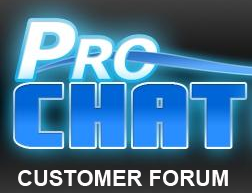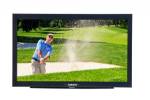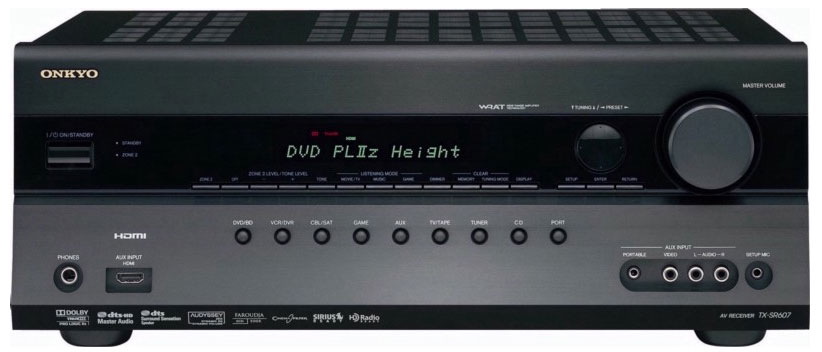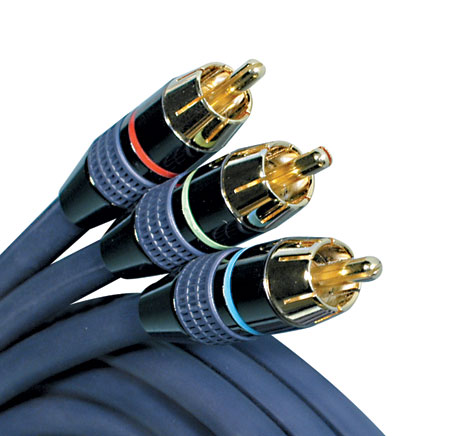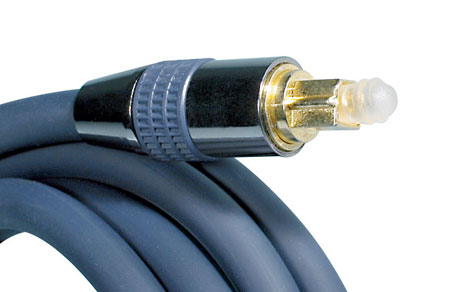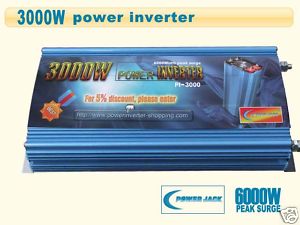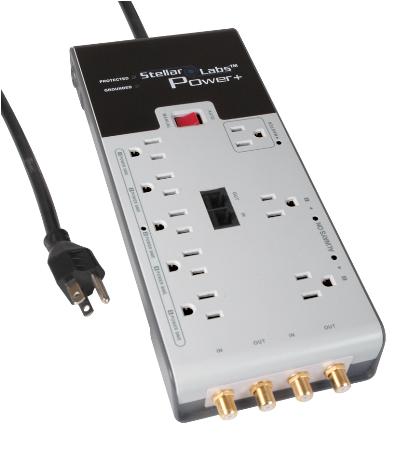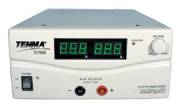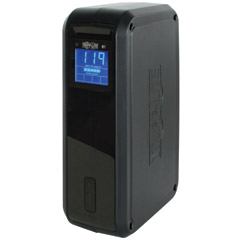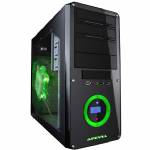To answer some of the questions you may have concerning loudspeaker design, we have included this design primer. It takes you step by step through the design and construction of a simple two-way system. Please keep in mind there are many factors to consider when building a loudspeaker, and the following tutorial is intended to address the major concerns.
Design Goal
For our example, the design objective is to build a two-way system, with a 1" soft dome tweeter and a 6-1/2" woofer, without using any test equipment. We choose a moderate sized, sealed enclosure for the best combination of bass quality and extension. A -3 dB down point of at least 55 Hz is also a requirement. The crossover point will be around 3,000 Hz. This is a good compromise, since most quality 6-1/2" woofers should have no problem extending smoothly to this frequency, and a well designed 1" dome tweeter will perform well at this crossover frequency.
Loudspeaker Selection
The first step to any successful project is to select the loudspeaker drivers. Since we are using a two-way design, a 6-1/2" woofer is chosen because of its ability to provide a good quality midrange performance and give adequate bass response. Very few 8" woofers can be crossed over successfully above 2,500 Hz and even fewer 5-1/4" woofers provide bass below 65 Hz! A 1" soft dome tweeter will be selected for its ability to be crossed over at 3,000 Hz with low distortion.
Now we reference the Speaker Selector Guide on pages 158 & 159 and find the listings for 6-1/2" woofers. We see that the Morel MW 162 6" woofer (#297-025) meets our goal nicely. In an undamped, 1.06 cubic ft. sealed box it should have an F3 around 51 Hz. In the specs listed on page 139, we see this driver has an upper frequency range of 6,000 Hz, so a crossover point of 3,000 Hz will not be a problem.
On to the tweeter! Staying with the Morel line, we decide on the MDT 10 (#277-025) for its frequency range of 2,000 -20,000 Hz and Fs of 1,000 Hz. When picking a tweeter, always cross it over 1 to 2 octaves above the Fs. In this case, Fs = 1,000 Hz, so a crossover point of 2,000 to 4,000 Hz will suffice.
Enclosure Design
We will now turn our attention to designing the enclosure. Previously, we determined that in an undamped 1.06 cubic ft. enclosure, the Morel woofer will give a - 3 dB down point of 51 Hz. To absorb internal standing waves and to prevent reflections into the woofer cone, we must add some sort of acoustic dampening material. Adding this material to an enclosure will effectively increase the apparent internal volume. This is important to note, especially with sealed box designs, since the enclosure should be filled close to 100%. Practical equivalent volume increases of 10 to 25% are possible depending on the amount and type of material used, so we must undervolume the enclosure to achieve our target. In our example, we will choose a .90 cubic ft. box and fill it with a 1lb. bag of Acousta-StufTM (#260-317) dampening material.
Standing waves in an enclosure are minimized somewhat by choosing proper ratios for box dimensions. The "Golden Ratio" is commonly used where the ratio of height/width/depth is given as 2.6/1.6/1. This effect is secondary to properly damping the enclosure with dampening material. Just avoid building the enclosure too narrow and tall as this could lead to strong pipe resonances inside the enclosure.

Enclosure Construction
An often overlooked aspect of loudspeaker performance is the construction of the enclosure. The quality of the finished cabinet is almost as important as the drivers themselves! A well-built cabinet will limit the amount of sound radiation caused by wall and baffle flexing and the frequency response aberrations it will cause. Also, if the box joints and seams are not properly sealed, low end performance will suffer. For this reason, we recommend using only high quality materials such as MDF (medium density fiberboard) or high density particleboard of at least 3/4" thickness. Preferably, the front baffle should be at least 1" thick, since it is being constantly pounded by the woofer and is structurally weakened by the woofer and tweeter cut outs. Each cabinet should include some sort of internal bracing to reduce any resonant vibration. Also, the drivers, particularly the tweeter, should be flush mounted to minimize diffraction effects. It's amazing how much smoother the tweeter's frequency response is by simply flush mounting it!
 The two frequency response curves to the
right are of the popular Vifa D25AG-35
aluminum dome tweeter (#264-512) and compare
flush mounting versus conventional mounting.
Without flush mounting, the tweeter's
response from 1,500-20,000 Hz is +/- 4.5 dB
(referenced to 91 dB). Note the 3.25 dB peak
at 4,500 Hz followed by a 4.5 dB dip at
7,000 Hz; not a good result. When flush
mounted, the same tweeter is now +/- 2.0 dB
from 1,500-20,000 Hz and +/- 1 dB from 6,000
to 20,000 Hz! A superb performance for any
tweeter.
The two frequency response curves to the
right are of the popular Vifa D25AG-35
aluminum dome tweeter (#264-512) and compare
flush mounting versus conventional mounting.
Without flush mounting, the tweeter's
response from 1,500-20,000 Hz is +/- 4.5 dB
(referenced to 91 dB). Note the 3.25 dB peak
at 4,500 Hz followed by a 4.5 dB dip at
7,000 Hz; not a good result. When flush
mounted, the same tweeter is now +/- 2.0 dB
from 1,500-20,000 Hz and +/- 1 dB from 6,000
to 20,000 Hz! A superb performance for any
tweeter.Prior to enclosure assembly, each panel is cut to size, then woofer and tweeter holes are cut. A router is used to cut the countersinks. Next, the bottom, top, back, and side walls are glued together (drywall screws are used to hold the box in position and assure proper alignment). Then, a shelf brace is installed horizontally between the tweeter and woofer positions. A shelf brace is a solid piece of MDF or particle board that joins the front, back and sides of the box with 4 large squares cut out for air flow. When installing a brace, never position it exactly in the center of the enclosure. A rule of thumb is to install it about 1/3 of the way between top and bottom. Now the baffle is glued in and allowed to dry. Once dry, apply a silicone sealer to every internal seam to seal the box. Next, the terminal cup and internal wiring are installed.
Crossover Design
For our example, we decide to use a crossover with a 12 dB per octave slope set at 3,200 Hz. A network with only a 6 dB per octave slope probably will not attenuate enough to protect our Morel tweeter from damaging low frequencies. Higher order filters introduce greater phase shift and are much more difficult to sum together correctly without using measurement equipment. A 12 dB per octave filter is, therefore, a good compromise.
To determine the correct values for our crossover network, we go to page 181 and reference the Crossover Component Selection Guide. The instructions are followed for using the chart, and it is seen that for drivers with an 8 ohm impedance, our crossover values would be a 4.4uF capacitor and a .56mH inductor for both the tweeter and woofer circuits. The closest capacitor value we have is a 4.3uF polypropylene, which is well within range. At this point, our crossover network will look like this:
 Notice
that the tweeter is connected with reverse
polarity. This is normal for all 12 dB per
octave filters.
Notice
that the tweeter is connected with reverse
polarity. This is normal for all 12 dB per
octave filters.The Crossover Component Selection Guide, as with all crossover formulas, assumes that the crossover network is terminated with a purely resistive load, but a loudspeaker is not even close to being purely resistive! Due to voice coil inductance, the impedance is constantly rising with frequency. To remedy this, a simple capacitor and resistor impedance equalizer called a Zobel network is placed across the positive and negative leads of the woofer. The Zobel is not usually necessary with a tweeter network, so we will design one for our Morel woofer using this formula:
R = Resistor value in ohms
Re = DC resistance of voice coil in ohms
Le = Voice coil inductance in henries
The Morel woofer has a DC resistance of 5.2 ohms and a voice coil inductance of .35mH or .00035 henries. So our Zobel network works out to be .0000129 farads or 12.9uF cap in series with a 6.5 ohm resistor.
 In practice these values are approximate,
and you may want to experiment, particularly
with the value of C.
In practice these values are approximate,
and you may want to experiment, particularly
with the value of C.If the driver's DC resistance or voice coil inductance is unknown, just use the nominal impedance for the value of R (8 ohm driver, use an 8 ohm resistor). The value of C for woofers is generally between 10uF and 50uF. For 5-1/4" to 8" woofers, try 10-20uF. 10" to 12" woofers, 20-25uF. 15" to 18" woofers, 30-50uF. Using this criteria for our Morel woofer, our Zobel would be a 15uF capacitor in series with an 8 ohm resistor. Pretty close to our calculated values!

To prove the effectiveness of a Zobel
network, we ran an impedance sweep from 20
to 20 KHz with and without the Zobel network
in place, using the LMS audio analyzer. As
can be seen on the graph, the Morel MW 162's
free air impedance starts to rise at 400 Hz
reaching 12 ohms at 3 KHz (our crossover
point), and rising to 33 ohms at 20 KHz.
With the Zobel in place (15uF + 8 ohm
resistor) the impedance only varies 1.5 ohms
from 100 Hz to 20 KHz! Clearly the Zobel
network is very effective at flattening the
impedance rise. It is also interesting to
note that the large impedance peak at 55 Hz
is the free air resonance, or Fs, of the
Morel woofer.
To complete our crossover design, we must
match the output level of the tweeter to the
woofer's. The Morel MDT 10 is rated at 90 dB
1W/1m, while the MW 162 woofer is rated at
only 84 dB 1W/1m.
 The simple solution to this mismatch is to
include an L-pad attenuator in our tweeter
circuit. This will allow attenuation while
maintaining a constant impedance. For our
example we will be using two resistors to
form a fixed L-type attenuator. The values
were calculated using a formula in The
Loudspeaker Design Cookbook by Vance
Dickason (#500-036). Our final crossover
network will now look like this:
The simple solution to this mismatch is to
include an L-pad attenuator in our tweeter
circuit. This will allow attenuation while
maintaining a constant impedance. For our
example we will be using two resistors to
form a fixed L-type attenuator. The values
were calculated using a formula in The
Loudspeaker Design Cookbook by Vance
Dickason (#500-036). Our final crossover
network will now look like this:
Crossover Construction
To complete the project, we just need to
mount and solder the components to a 2-way,
PC board (#260-120). For the highest quality
signal transfer, we will use 14 gauge air
core inductors and polypropylene capacitors.
When placing more than one inductor on a PC
board, always mount them at 90ø angles to
each other and try to keep them at least 2
inches apart to avoid inductive coupling.
For the same reason, the crossover should be
mounted a reasonable distance from the
woofer magnet structure. When the crossover
is completed, all of the components should
be glued to the PC board using epoxy or hot
glue (inductors can be quite heavy,
requiring epoxy). Once the crossovers are
complete and mounted inside the enclosure,
we can hook up the drivers and enjoy our
work!
One important last word on the crossover,
since the tweeter is placed physically ahead
of the woofer on a flat baffle, the drivers
may now be acoustically out of phase with
each other due to time delay. Angling the
speaker cabinet back about 6ø will help time
align the drivers, thus putting them back
in-phase. Also, reversing the tweeter's
polarity may work. Experiment with different
combinations of speaker angle and/or tweeter
polarity then determine what sounds the
best. Getting the phase right will actually
eliminate a deep "null" or hole in the
frequency response centered on the crossover
frequency.
Recommended Reading
This primer was intended to show you the
steps required to build a two-way system
without the need for expensive measurement
equipment. We tried to be as in-depth as
possible without getting into too much
complex theory. To gain much more valuable
information on the subject of loudspeaker
drivers, cabinet construction, and crossover
design, we highly recommend the following
books and publications:
- Designing, Building, and Testing Your Own Speaker System by David Weems
- The Loudspeaker Design Cookbook, 7th Edition by Vance Dickason
- Loudspeaker Recipes, Book 1 by Vance Dickason
- Speaker Builder Magazine


